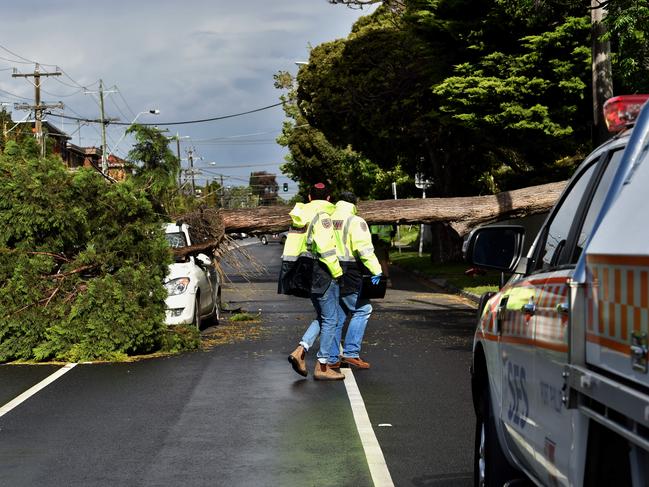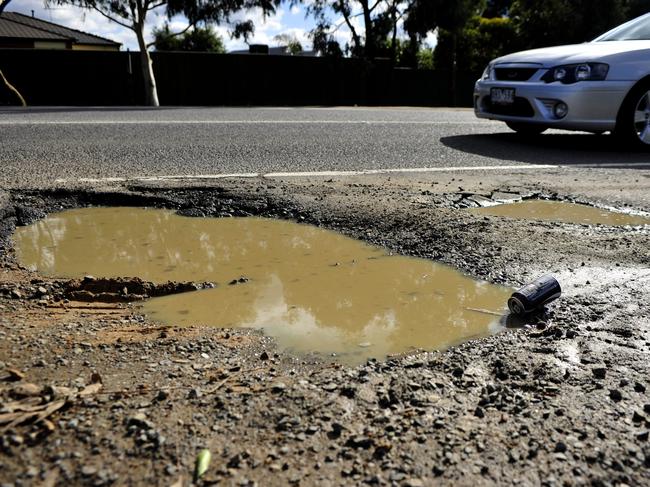Bold plan to weatherproof state roads as annual repair bill hits $2.7bn
Victoria’s roads may soon be injected with strengthening foam and its power lines bundled with insulation as part of a new plan to help the state save big bucks when wild weather strikes.
Victoria
Don't miss out on the headlines from Victoria. Followed categories will be added to My News.
Injecting road bitumen with strengthening foam and bundling power lines with insulation would save Victoria big bucks when wild weather hits, a new report says.
Infrastructure Victoria will on Tuesday release recommendations to the Allan Government on how to better protect road, rail and energy systems against climate change events.
Its report shows that extreme weather caused about $2.7 billion in damage each year between 2007 and 2016, but that forecasts were for this to soar as more severe bushfires and floods hit the state this century.
It says to try to reduce what could be a cumulative $986bn bill by the end of the century, governments need to better safeguard infrastructure, instead of just waiting to pay the clean-up bill.
At the moment, governments spend 97 per cent on repairs after weather events, and just 3 per cent on proactive measures.

Infrastructure Victoria chief executive Dr Jonathan Spear said there was clear evidence that “prevention is better than cure”, with some of the simple bang-for-buck investments including better preventive maintenance to avoid clogged drains or fallen power lines.
“Victoria’s infrastructure was not built for more frequent and severe weather events. Infrastructure is now exposed to greater damage from bushfire, floods, and storms,” Dr Spear said.
“Our research shows how targeted and cost-effective adaptation solutions can keep Victorians safer, keep businesses open and reduce the costs of recovery.”
Injecting a foam solution into bitumen when building roads — a practice widely used in Queensland, NSW and New Zealand but seldom in Victoria — would help improve strength and reduce the time roads are closed after floods.
Modelling shows that for every $1 spent in current conditions there would be a benefit worth $3, but that benefits rise to $4.83 in “future conditions” where more wild weather is expected.
Insulated or “aerial bundled” electricity cables would return $1.16 for every $1 spent.

This has been done in some parts of Victoria, including by United Energy in the Mornington Peninsula.
Recent wild storms in Victoria knocked hundreds of thousands of homes off the grid largely due to power lines falling or tripping.
Dr Spear said the recommendations were not a one size fits all, and targeting investments to most at-risk areas was important for cost effectiveness.
Some options “cost very little” the report says, such as building infrastructure in safer locations, using materials that minimise the impacts of climate risks, and changing the type and frequency of maintenance.
It says acting on recommendations would mean “less damage, and communities and businesses experience less harm, fewer costs, and can return to normal faster after a serious event”.




